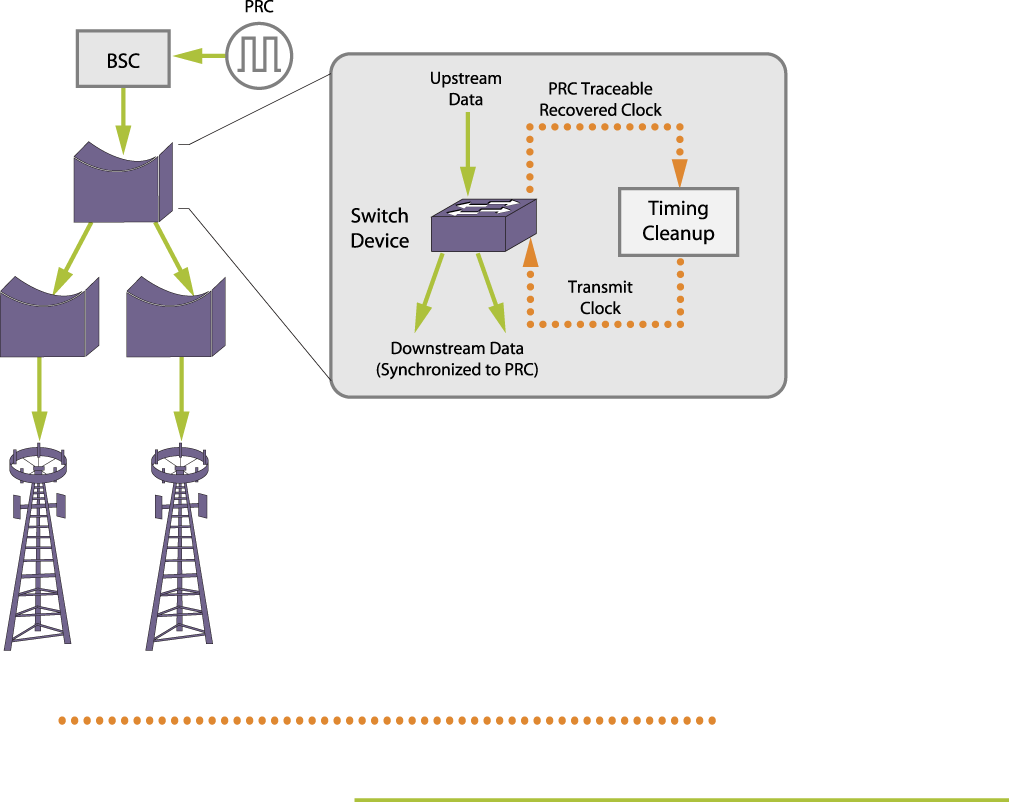Synchronous Ethernet (SyncE) is defined in ITU-T recommendations G.8262/G.8264.
This feature provides the capability for the hardware to synchronize the clock time that is used for data transmission to a reference clock. This primary reference clock (PRC) comes from a base station controller (BSC).

On the switch, one port is configured to be the source for the master interface clock. A second port can be configured to be the source for a backup reference clock should the master be disconnected or fail. Up to two ports can be specified as a clock source. Data transmission for all other ports are synchronized to the master interface clock. If the master port fails, clock accuracy is maintained. When the ExtremeXOS software detects the failure, it enables the secondary port for the clock. If, at any time, the master port comes back up, it again becomes the source of the primary clock still with accuracy maintained.
It is not necessary for data from the clock master or backup ports to be sent over the other interfaces to maintain synchronization. Only the transmission timing is affected.
The Ethernet Synchronization Messaging Channel (ESMC) is defined by ITU-T for synchronous Ethernet links. ESMC PDUs guide hardware to pick primary clock source and send ESMC messages downstream with clock accuracy details for systems to synchronize.

 Print
this page
Print
this page Email this topic
Email this topic Feedback
Feedback